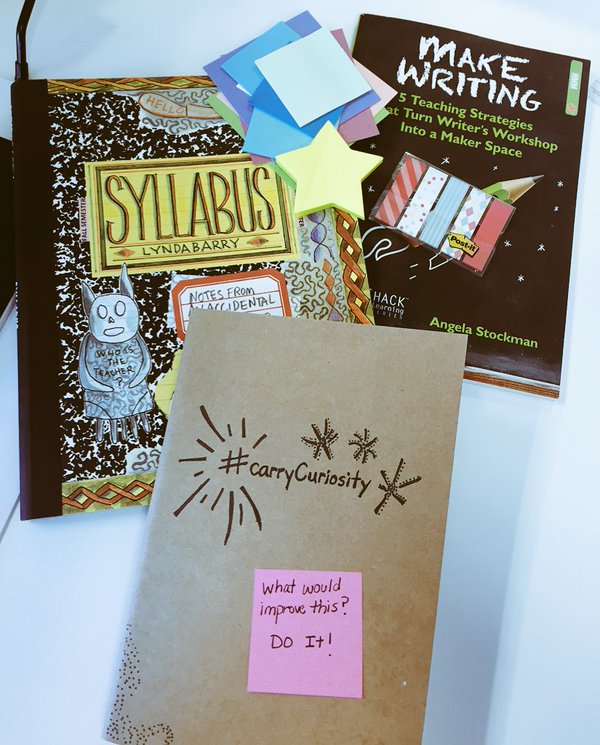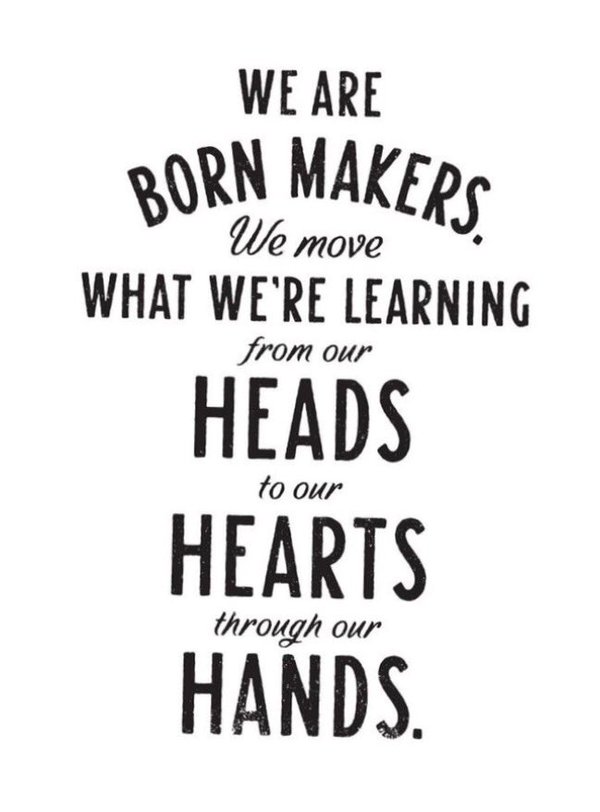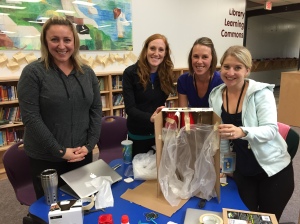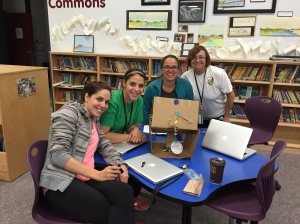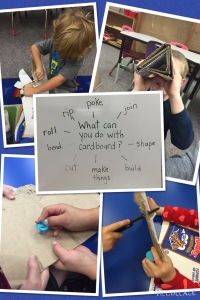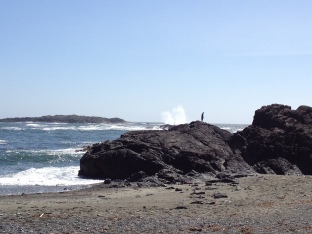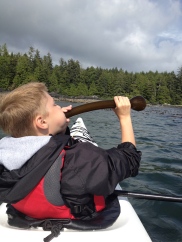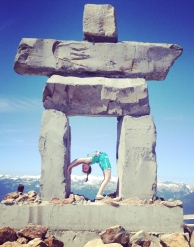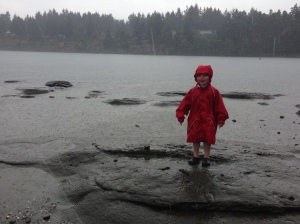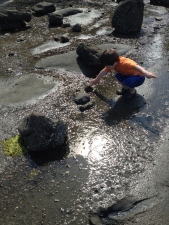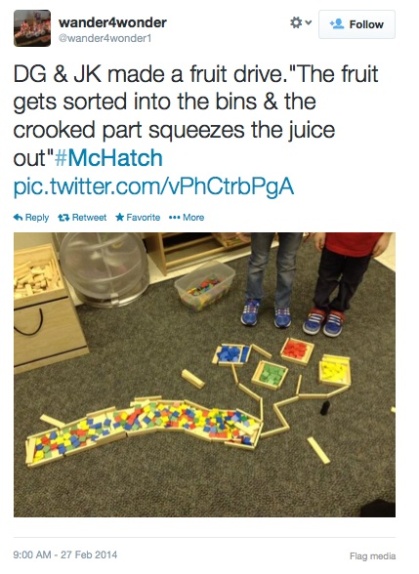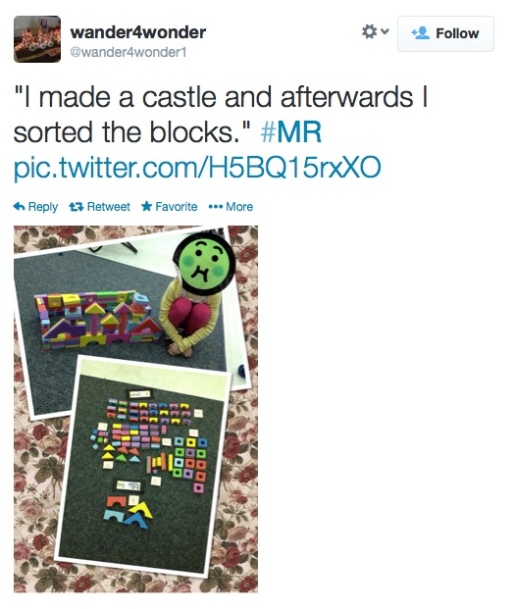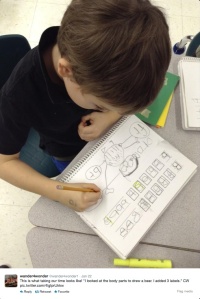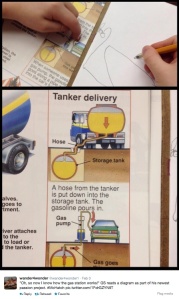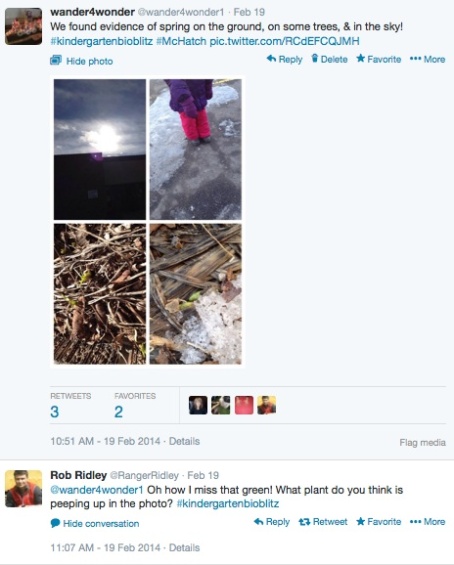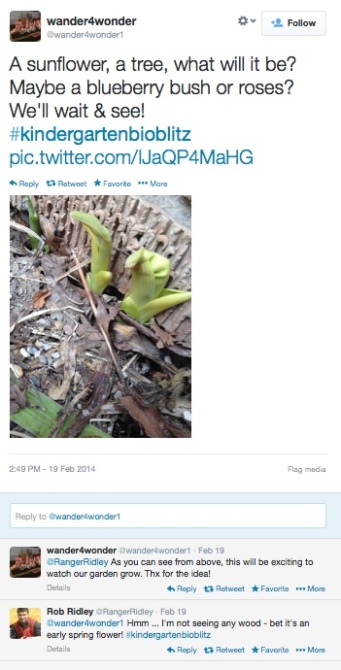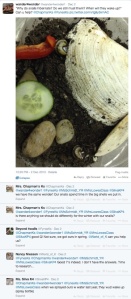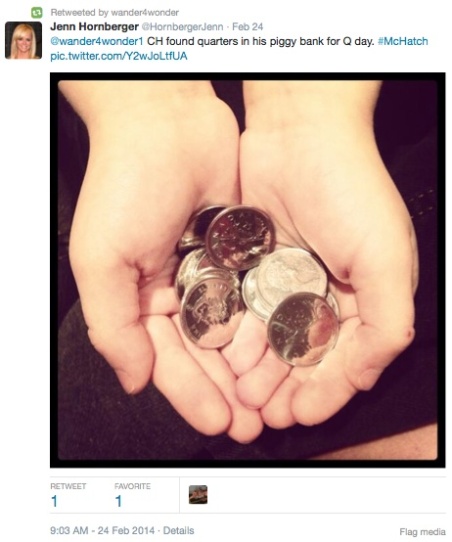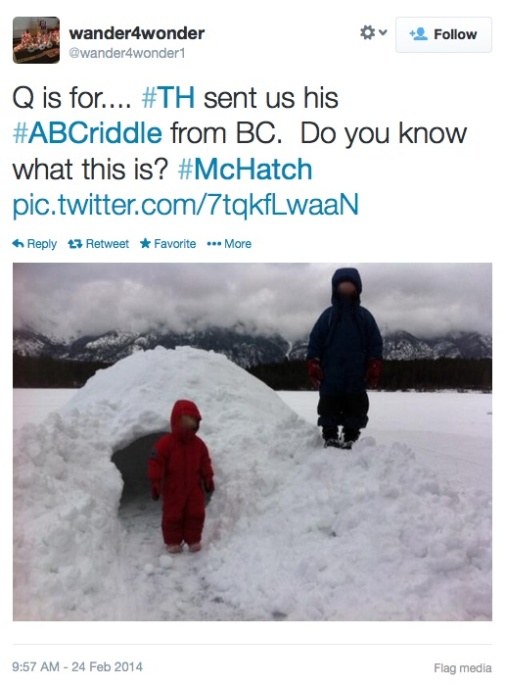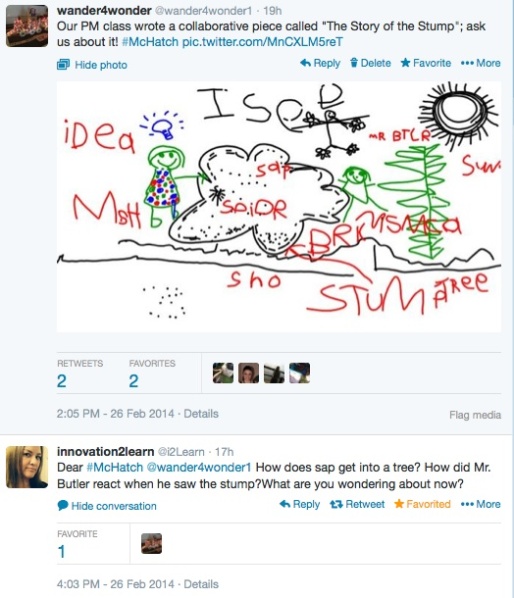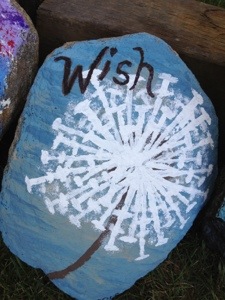I’d like to welcome my fabulous team teacher, Jaime Hatchette, as my co-pilot as we look closely at our learning resulting from our participation in the Canadian Opening of the “Cultivating the Scientist in Every Child”. We would like to thank Louise Jupp, Diane Kashin, Richland Academy, and Acorn School for opening your hearts and doors, and enabling us to be part of this transformational experience!
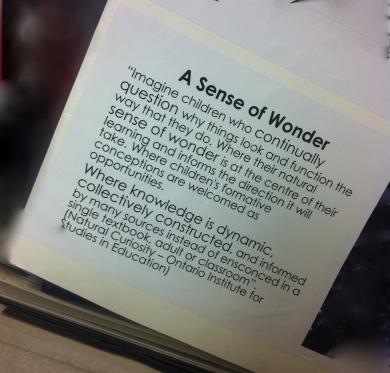 It is difficult to summarize the profound learning we experienced. We are both very new to our Reggio-Inspired journey, but one thing struck us both. At the end of Saturday, it was the relationships that left the biggest imprint on us.
It is difficult to summarize the profound learning we experienced. We are both very new to our Reggio-Inspired journey, but one thing struck us both. At the end of Saturday, it was the relationships that left the biggest imprint on us.
Conversing with educators who are passionate, knowledgeable, and love what they do just as much as we do, cemented the understanding that teaching is first and foremost about relationships. Not just between students, but as a connected web of learners who support, challenge, and guide each other on a continuous basis.
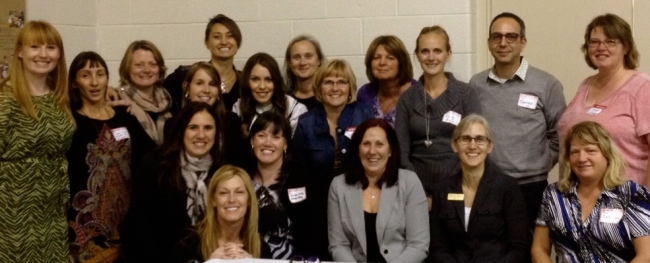
We decided to deconstruct our learning and isolate what spoke to us as being important. As we begin to make changes in our environment we know that our understandings will continue to shift and grow, but for now, these were our initial impressions from the weekend:
Start by identifying the big ideas. Look closely at the curriculum and pull out the essential understandings. Create questions to pose and build specific invitations to learn through playing. Overtly explain those big ideas within your documentation to support visible learning. Anyone looking at the invitation or documentation should be able to explain what learning is taking place.
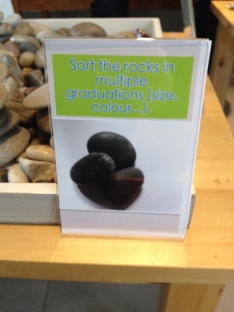
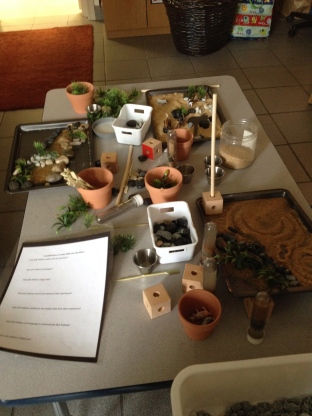
Repeat and live the mantra “Less is more”. Set up invitations to play in defined spaces. Define learning nooks to encourage more purposeful and thoughtful play. Build up the offered materials in progression. Add one step at a time to encourage the students to come to know the possibilities in deeper, meaningful, and creative ways. Rotate and move materials around the classroom (on display and off) to maintain interest and encourage seeing materials in new ways.
Choose documentation artifacts carefully. Not every picture or artifact needs to be openly displayed. Pictures evoke emotion and tell the story best. Limit text, or display the detailed text beside or behind the images.
It is worth repeating, less is more!
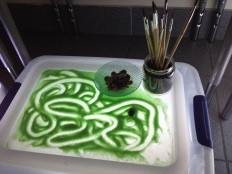
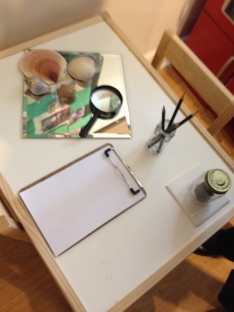
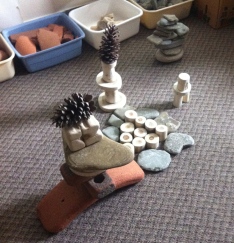
Honour many voices, represented in many ways. Use documentation to capture experiences from a 360 degree viewpoint. Invite the children to participate as authors. Give them the cameras. Include their words. Have them choose the artifacts. Invite parents, specialists, Artists in Residency, and students from outside the classroom, to share their understandings.
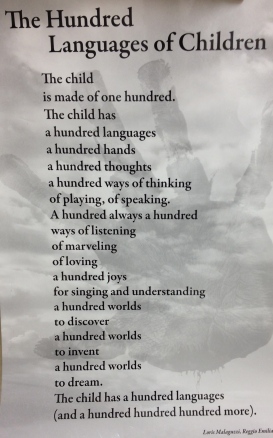
Learning is collaborative. It is a relationship between many people – students, staff, parents, and community members. It is a relationship between learners and their environment. Share your learning focus with others so that they can become part of it and learn from it in their own context. Create collaborative learning communities i.e. Innovation Week, buddies, pods of learners coming together to work on common interests or topics i.e. “GetOutside Day”, “We Day”, ect. Allow the time for students to mess about and develop their relationship with the materials. Create opportunities to develop professional networks i.e. professional book studies, cross-grade PLCs, sharing of practice at staff meeting i.e. “What’s in your literacy toolbox?”.
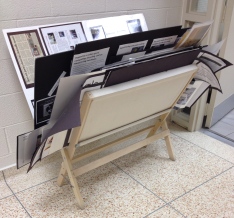
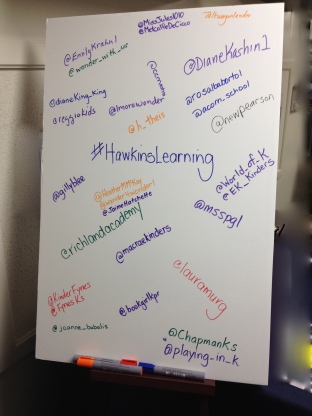
As educators, we need to be learners ourselves. Play, wonder, explore, investigate, research, and question right alongside the students, as partners in the learning. The journey IS the learning! Take part in learning. Experience it! Connect with learning networks i.e. School Board Learning Networks, Twitter (professional and classroom accounts). Follow blogs that enlighten i.e. Looking Closely, Laurel Fynes, Joanne Babalis, Sergio Pascucci, Diane Kashin/Louise Jupp , Janice Noavakowski. Find what your are passionate about, and play with it!
We know that we have only scratched the surface in our learning from this experience. By taking the time to unpack our learning and collaboratively plan, based on our shared experiences and reflections, Jaime and I are excited about the learning that is already unfolding. We look forward to continuing the many conversations we started with friends at the conference, as well as learning more about how to cultivate curiosity in our classrooms. Please let us know if you have any questions or comments!
Thank you for taking the time to join us on our learning journey!

